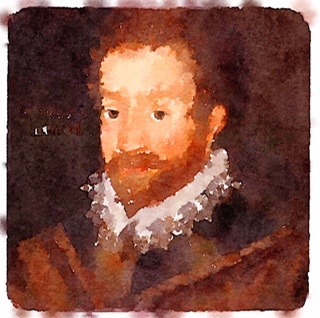
English buccaneer and explorer Francis Drake (c. 1545-1596) enriched himself raiding Spanish interests in the Caribbean between 1567 and 1572.
Influential figures in Queen Elizabeth's court approached him with a proposal for an English expedition to the Pacific with the Queen as a silent partner and co-conspirator.
William Cecil, her chief counsellor, was trying to mend fences with Spain and the official objective of the exercise seems to have been finding undiscovered territories where English merchants could trade English goods using their own shipping.
The expedition appears to have been pointed towards two coasts, one of which was believed to stretch north-west across the Pacific from the Straits of Magellan and Tierra del Fuego to around 30 S.
The other official objective involved a search for the Pacific end of the North-West Passage around North America.
Having left England in December 1577 with five ships and 166 men the fleet passed through the Straits of Magellan in August 1578 and was blown south to Cape Horn.
Violent storms battered the flotilla for fifty-two days, one ship foundered with all hands, and the rest turned for home, leaving Drake to carry on in his flagship, now renamed the Golden Hind.
He sailed along the coasts of Chile and Peru, raiding Spanish ships and settlements along the way, and reached California but failed to find a North-West Passage back into the Atlantic,
His return route took him southwest across the Pacific to the Moluccas, and after refitting in Java, the Golden Hind rounded the Cape of Good Hope in June 1580.
He was back in England in September 1580. Despite Spanish protests and calls for the pirate to be punished Elizabeth visited the Golden Hind at Deptford and knighted him,
After further raids on Spanish positions in the Caribbean (1585—86) and Cadiz (1587), Drake played a significant role in the defeat of the Spanish Armada (1588).
He led an expedition to Lisbon (1589) and after a spell in Parliament resume his privateering career in the West Indies in 1595.
After capturing Nombre de Dios on the northern coast of Panama, he failed to take Panama City and died of dysentery off the coast of Panama in January 1596.